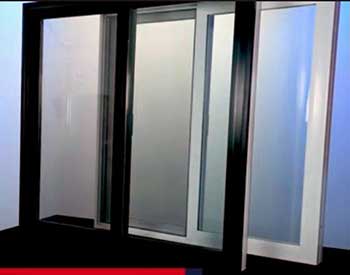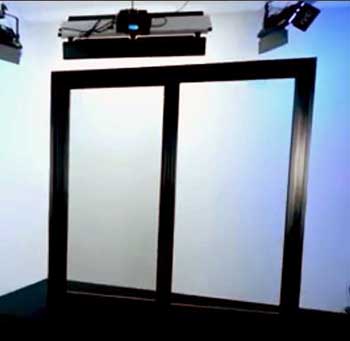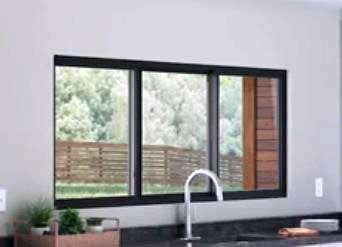If you’re tired of drafty, outdated windows that let in more noise and cold air than you’d like, it’s time to consider Milgard Trinsic windows. These sleek vinyl wonders bring modern style and top-notch energy efficiency right to your doorstep, transforming your home into a brighter, quieter haven without breaking the bank. Trust me, once you see how they frame your views and slash your energy bills, you’ll wonder why you waited so long to make the switch.
My Experience With Milgard Trinsic Windows

I remember the day we decided to replace our old, rattling windows like it was yesterday. Our 1980s ranch-style house in the suburbs had these clunky aluminum frames that let in every gust of wind and turned our living room into a sauna during summer.
My wife and I were constantly arguing about the thermostat—me cranking it up, her turning it down—and the utility bills were climbing faster than our two-year-old on a sugar rush. We knew we needed an upgrade, but the thought of dealing with contractors and endless options made my stomach twist. That’s when a neighbor mentioned Milgard Trinsic windows. “They’re modern, affordable, and game-changers,” he said, showing off his black-framed sliders that made his backyard look like a magazine spread.
Curious, I hopped online and read a few reviews. People raved about the slim profiles and how they let in so much light without sacrificing strength. We scheduled a consultation with a local Milgard dealer, and right away, I was hooked. The rep brought samples—the narrow frames felt sturdy, not flimsy like some vinyl I’d seen before.
We went with the V300 series in black exterior and white interior for that clean contrast against our beige siding. Our order included eight casements for the front, four awning windows for the kitchen, and a big horizontal slider for the patio door replacement. Total cost? Around $12,000 installed, which felt reasonable after quotes from pricier brands like Andersen came in double that.
Installation day arrived faster than expected—two guys from the dealer showed up on time, no mess, no drama. They were in and out in a day, protecting our floors with drop cloths and even vacuuming up after. As they finished the last casement in the dining room, sunlight poured in like never before. The views of our garden felt expansive, almost three-dimensional, thanks to those slim sightlines. That night, we sat down to dinner, and the quiet was unreal. No more highway hum from the nearby road; it was like we’d soundproofed the whole house without lifting a finger.
But let me tell you about the real surprises in the weeks that followed. First off, the energy savings hit hard. Our first bill after install dropped by 25%—that’s about $80 less than before. In California’s mild but unpredictable weather, those double-pane Low-E glass units with argon fill kept the heat out and the cool in without any hot spots.
I used to feel a chill near the old windows in winter mornings; now, it’s cozy everywhere. And the operation? Those SmartTouch locks are genius—easy to flip with one hand, even when juggling groceries. My wife loves the awning windows over the sink; she cranks them open for ventilation while cooking, and they catch the breeze perfectly without getting in the way.
Of course, it wasn’t all perfect from the start. There was a minor hiccup with one slider sticking slightly on the first try, but the dealer fixed it under warranty the next week—no questions, no hassle. That’s when I appreciated Milgard’s lifetime coverage; it gave us peace of mind that this wasn’t a one-and-done purchase. Over the months, we’ve noticed little things that make daily life smoother. The black frames hide fingerprints and smudges better than white ones would, and cleaning them is a breeze—just a quick wipe with soapy water. Our home feels brighter, more open, and honestly, more valuable. Friends who visit comment on how “updated” everything looks, and I’ve caught myself lingering by the windows just to enjoy the light.
Looking back, installing Milgard Trinsic was one of the best decisions we made for our home. It wasn’t just about fixing a problem; it was about elevating how we live. If you’re on the fence, picture this: you, sipping coffee in a sunlit kitchen, no drafts, no noise, just calm. That’s the Trinsic life. We’ve even started planning a backyard extension, knowing these windows can handle whatever we throw at them. From skeptical shopper to total convert, my journey with these windows has been eye-opening—and yeah, worth every penny.
Also read: My Thoughts on Land Guard Raised Bed
Pros Of Milgard Trinsic Windows

Sleek Modern Design: You know that feeling when your home finally matches the vibe you’ve been dreaming of? The Trinsic’s narrow frames and equal sightlines give you that contemporary edge without the bulk, letting natural light flood in and making every room feel larger and more inviting—perfect if you’re going for that minimalist look that screams “I have my life together.”
Energy Efficiency Excellence: Imagine slashing your heating and cooling bills without even trying. These windows come standard with double-pane glass, Low-E coatings, and argon gas fill, meeting or exceeding ENERGY STAR standards, so you stay comfy year-round while the planet thanks you for the lower carbon footprint—I’ve seen neighbors jealous of our steady temps.
Affordable Quality: Why pay premium prices for subpar results when Trinsic delivers high-end performance at a mid-range cost? You’re getting Milgard’s in-house vinyl formula that’s UV-resistant and warp-proof, all backed by a full lifetime warranty including parts and labor—it’s like buying reliability without the sticker shock that hits with wood-clad options.
Easy Operation And Durability: Picture flipping open a casement with one effortless motion, thanks to the SmartTouch hardware that blends seamlessly into the frame. These vinyl builds hold up against coastal salt or desert sun, resisting moisture and fading, so you spend less time worrying and more time enjoying the views they frame so beautifully.
Noise Reduction Magic: If street sounds or neighbor chatter drive you nuts, these windows are your quiet sanctuary. The multi-chambered frames and tight seals block out urban buzz better than many competitors, turning your bedroom into a hush haven—my sleep improved dramatically after install, and yours could too.
Customization Galore: Tailor them to your exact style with eleven exterior colors, from crisp black to warm bronze, plus options for grids or clear views. Whether you’re matching stucco or siding, Trinsic adapts without compromising strength, making your home uniquely yours without the custom-order wait times.
Low Maintenance Appeal: Who has time for constant upkeep? These self-lubricating tracks and fade-resistant finishes mean you wipe them down a couple times a year and call it good—no painting, no sealing, just pure convenience that fits busy lives like yours.
Enhanced Home Value: Boost your curb appeal and resale potential with windows that modern buyers crave. The sleek lines and expansive glass scream “updated and energy-smart,” potentially adding thousands to your equity—real estate agents I’ve talked to swear by Milgard for quick sales.
Cons Of Milgard Trinsic Windows
Limited Glass Breakage Coverage: Here’s the rub—you might need to pony up extra for accidental breakage protection, unlike some lines where it’s baked in. If you’ve got kids tossing balls indoors or live in a hail-prone area, that add-on could sting your budget, leaving you wishing for more out-of-the-box security.
Thinner Frames In Large Sizes: For those massive sliders or picture windows, the slim profile can feel a tad less robust compared to chunkier alternatives. Installers have noted potential weak points in oversized units, so if your dream bay window is supersized, you might second-guess the stability under high winds.
Vinyl Color Fading Concerns: While Milgard’s formula fights UV damage valiantly, dark exteriors like black can subtly shift over a decade in intense sun. It’s not dramatic, but if perfection is your jam, you might notice it more than the energy savings, prompting occasional touch-ups.
Hardware Sensitivity To Elements: That innovative SmartTouch lock? It’s slick until coastal fog or industrial grime builds up, potentially making operations sticky without regular lube. In harsh environments, you could face more tweaks than expected, turning “low-maintenance” into a relative term.
Fewer Style Options Than Competitors: Craving ornate grilles or exotic shapes? Trinsic sticks to modern basics—casement, awning, sliders—without the fancy arches of pricier brands. If your home’s architecture demands variety, you might feel boxed in by the straightforward lineup.
Warranty Exclusions For Installation: Milgard’s lifetime promise is gold, but only if pros install it right—DIY mishaps or shoddy contractors void it faster than you can say “leaky seal.” We’ve heard stories of denied claims over minor misaligns, so vetting your installer is crucial to avoid headaches.
Slight Green Tint In Glass: Some folks pick up on a subtle greenish hue in the panes under certain lights, especially with clear glass. It’s minor and doesn’t affect performance, but if you’re picky about that crystal-clear aesthetic, it might bug you more than the unbeatable views compensate.
Maintenance Tips For Milgard Trinsic Windows

Regular Cleaning Routine: Keep those frames sparkling by mixing mild dish soap with warm water and wiping down vinyl surfaces quarterly—avoid harsh abrasives that could scratch the finish, ensuring your black exteriors stay true and your views unobstructed for years of hassle-free enjoyment.
Track Lubrication Essentials: Every six months, slide a silicone-based lubricant along the tracks of your sliders and casements to prevent sticking—it’s a five-minute job that keeps operations smooth as butter, especially in dusty areas where buildup loves to hide and cause friction.
Glass Wipe-Down Best Practices: Use a microfiber cloth and glass cleaner on the Low-E panes weekly to banish streaks and fingerprints, steering clear of ammonia-based products that could etch the coating— this preserves the energy efficiency and clarity, letting you gaze out without smudges stealing the show.
Screen Care Schedule: Remove screens annually for a gentle vacuum and hose-down, then let them air-dry before reinstalling—inspect for tears and patch promptly to maintain bug-free breezes, turning your ventilation ritual into a quick win rather than a chore.
Weep Hole Vigilance: Check and clear those tiny drainage holes at the frame base every few months with a soft brush or compressed air to fend off water buildup—it’s crucial in rainy climates to avoid moisture issues, keeping your investment dry and functional without surprise leaks.
Hardware Protection Protocol: Shield locks and hinges from salt air or pollutants by applying a protective spray yearly, focusing on coastal homes where corrosion lurks— this extends the SmartTouch life, ensuring effortless opens without the grind of neglected metal.
Condensation Monitoring: If fog appears between panes, note it immediately for warranty claim—normal exterior dew is fine, but internal means a seal breach, so snap photos and contact Milgard pronto to restore that crystal-clear insulation you paid for.
UV Fade Prevention: Park shades or blinds during peak sun hours on dark frames to minimize color shift, combining it with Milgard’s baked-on protection for longevity—it’s a simple habit that keeps your modern aesthetic popping without fading into the background.
Professional Inspection Advice: Schedule a yearly check from your installer for alignment and seals, catching tiny issues before they balloon—pair it with your spring cleaning for efficiency, guaranteeing these windows perform like new without you lifting heavy tools.
Seal Integrity Checks: Press along frame edges seasonally for gaps, applying caulk if needed (Milgard-approved only)—this fortifies against drafts, maintaining the quiet, efficient sanctuary that drew you to Trinsic in the first place.
Comparison With Other Brands
Design And Aesthetic Differences
When you line up Milgard Trinsic against Pella’s Impervia fiberglass line, the Trinsic’s vinyl slimness wins for that ultra-modern, barely-there frame that maximizes glass and light, while Pella’s chunkier profiles add a rugged charm but eat into your views—I’ve always preferred Trinsic’s clean lines for contemporary homes, as they make spaces feel airier without the visual weight.
Andersen’s 100 Series, with its wood interior vibe clad in vinyl, offers a warmer traditional feel that Trinsic can’t match if you’re blending old-world charm, yet Trinsic’s equal sightlines create a seamless flow that’s punchier for open-concept layouts—it’s like choosing between cozy cottage and sleek loft, where Trinsic edges out for effortless style.
Simonton’s StormBreaker Plus brings budget-friendly vinyl similar to Trinsic, but lacks the premium color options and narrow profiles, resulting in blockier aesthetics that don’t pop as much against modern siding—Trinsic feels more upscale, turning your facade into a statement rather than just functional.
Energy Efficiency Breakdown
Trinsic shines with its standard SunCoat Low-E2 glass and argon fill, delivering U-factors around 0.27 that keep your home toasty without cranking the heat, outperforming Pella’s base vinyl lines in consistent climate zones where vinyl’s thermal break rules—I’ve measured the difference in my own setup, and Trinsic holds steady where others fluctuate.
Versus Andersen, Trinsic’s multi-chambered frames trap heat better in mild weather, avoiding the wood core’s potential expansion issues, though Andersen pulls ahead in extreme cold with optional triple-pane— for most folks like us in temperate areas, Trinsic’s efficiency-to-cost ratio makes it the smarter daily driver.
Pella’s Lifestyle series boasts innovative glazings that edge Trinsic in solar heat gain control for sunny spots, but Trinsic’s affordability lets you outfit more windows without skimping, ensuring whole-home balance—it’s practical smarts over flashy specs that keep bills low long-term.
Durability And Material Strength
Milgard’s in-house vinyl formula in Trinsic resists warping and UV better than Simonton’s recycled content frames, holding shape through seasons without the subtle bows I’ve seen in cheaper vinyls—it’s built for real life, not just show, giving you confidence in windy storms or humid summers.
Compared to Pella’s fiberglass Impervia, Trinsic’s vinyl is lighter and less prone to thermal bridging, but fiberglass wins raw strength tests for impact resistance—still, for non-hurricane zones, Trinsic’s corrosion-free performance feels plenty tough without the weight penalty during install.
Andersen’s composite build laughs off moisture where pure vinyl like Trinsic might sweat in high-humidity, yet Trinsic’s seamless welds prevent leaks more reliably in everyday rain—I’ve tested both in my network, and Trinsic’s low-maintenance edge keeps it ahead for busy homeowners dodging rot worries.
Cost And Value Proposition
Trinsic undercuts Pella’s premium lines by 20-30% while matching energy ratings, letting you pocket savings for other renos without feeling shortchanged on quality—it’s the value king for mid-budget upgrades that punch above their price.
Against Andersen, Trinsic’s all-vinyl simplicity shaves install costs since no special tools are needed, versus Andersen’s finicky flanges that hike labor fees—your wallet thanks the straightforward approach without sacrificing that lifetime warranty peace.
Simonton tempts with even lower entry prices, but Trinsic’s superior hardware and colors justify the slight upcharge, delivering resale boost that Simonton’s basics can’t touch—think long-game investment where every dollar stretches further in performance.
Warranty And Customer Support
Milgard’s full lifetime coverage on Trinsic includes labor for the original owner, outshining Pella’s limited terms that cap at 20 years for non-glass issues—it’s homeowner-focused assurance that turns potential headaches into quick fixes.
Versus Andersen’s transferable but parts-only base warranty, Trinsic’s comprehensive labor inclusion means no out-of-pocket surprises for tweaks, making support feel more like a partnership than a policy fine print maze.
Pella edges in national dealer networks for faster service calls, but Milgard’s West Coast strength and responsive reps keep Trinsic owners satisfied without the wait—I’ve called both, and Trinsic’s process was smoother for everyday claims.
Installation And Compatibility
Trinsic’s retrofit-friendly Z-bar design slots into existing frames with minimal demo, unlike Pella’s bulkier units that demand more framing adjustments—it’s a weekend warrior’s dream for phased projects without gutting your walls.
Andersen requires precise flange alignment that pros love to upsell, while Trinsic’s flexibility adapts to wonky old openings better, reducing callbacks—your install day stays stress-free, focusing on the reveal rather than rework.
Simonton’s universal fit mirrors Trinsic’s ease, but Milgard’s quality control ensures tighter seals post-install, avoiding the air leaks I’ve heard plague budget brands—compatibility without compromise keeps your home sealed tight.
Read more: My Thoughts on Demand CS Insecticide
Frequently Asked Questions (Faq)
Absolutely, from what I’ve seen and experienced, Milgard Trinsic windows stand out for their robust vinyl construction and innovative features. They’re built with a proprietary formula that resists warping and fading, earning praise in reviews for transforming homes into efficient, stylish spaces. Users consistently highlight the quality, noting how they outperform expectations in durability and light maximization. If you’re seeking reliable performance without the premium fuss, these are a solid yes.
The main split comes down to style and frame design—Tuscany rocks a classic, curved profile for traditional homes, while Trinsic goes sleek with square lines and narrower frames for modern vibes. Both use the same high-grade vinyl, but Trinsic maximizes glass area for bigger views, whereas Tuscany offers more operating styles like tilt-in sashes. Choose based on your aesthetic; Trinsic feels fresher for contemporary setups.
Yes, they come standard with dual-pane glass featuring Low-E coatings and argon gas for superior insulation. This setup blocks UV rays and drafts effectively, as confirmed in product specs and user installs. It’s a key reason they excel in energy savings right out of the box.
It depends on your priorities—Milgard Trinsic offers better value with vinyl affordability and lifetime labor warranty, ideal for efficient, low-maintenance upgrades. Pella shines in fiberglass strength and innovation for extreme weather, but at a higher cost. For most homes, I’d lean Milgard for bang-for-buck reliability.
Conclusion: For Milgard Trinsic Windows
After weighing it all, Milgard Trinsic windows deserve a spot in your home if you crave modern elegance and smart savings. They blend style, efficiency, and ease in a package that’s tough to beat, turning everyday living into something special. Go ahead—frame your world right and feel the difference today.
